“The cosmos is all that is or ever was or ever will be.” – Carl Sagan
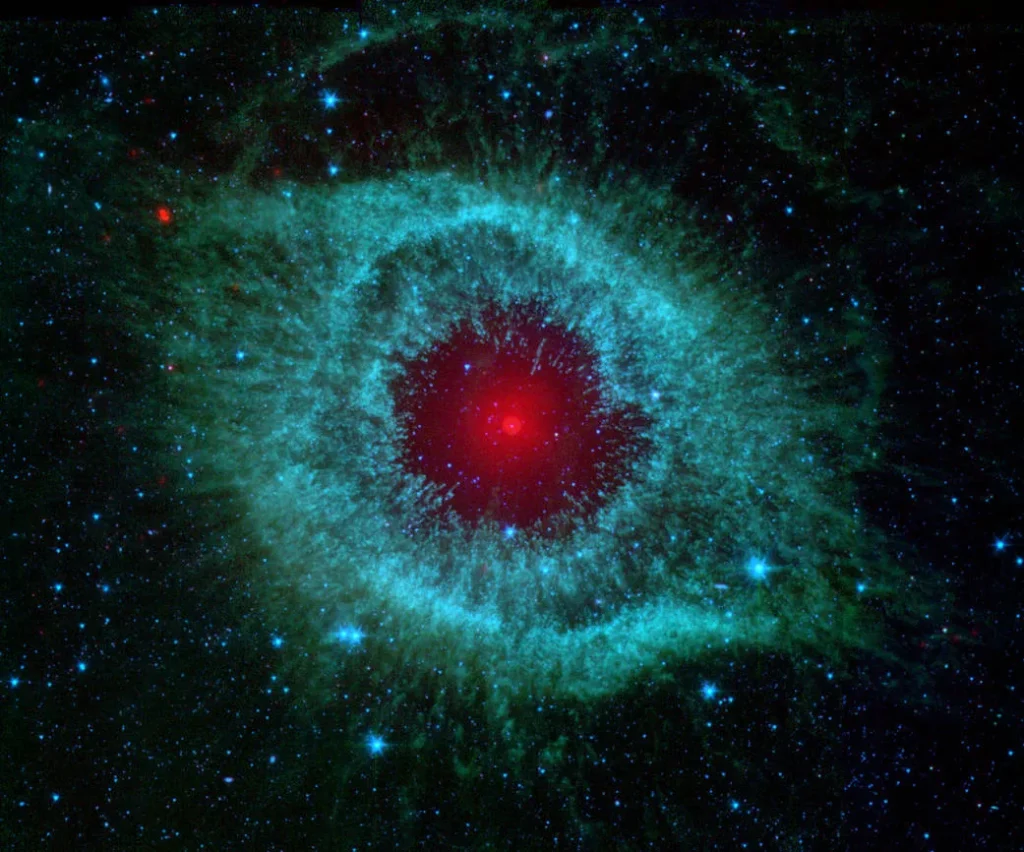
As we gaze into the night sky, we can’t help but feel a sense of wonder and curiosity about the vast universe that surrounds us.
Table of Contents
One celestial object in particular has captured the imagination of scientists, artists, and stargazers alike: The Eye of God, or the Helix Nebula. Located 650 light years away from Earth, this mesmerizing formation seems to be observing us, offering a glimpse into the beauty and mystery of the cosmos.
In this article, we will delve into the science behind the Eye of God, its formation, and the significance of this breathtaking celestial object in the grand tapestry of the universe.
Our Universe Is Result of a Lab Experiment by Aliens: Harvard Professor
The Discovery of the Eye of God
The Helix Nebula, also known as NGC 7293, was first discovered in the early 18th century by German-born astronomer Karl Ludwig Harding. However, it was not until the advent of powerful telescopes and modern imaging technology that we were able to truly appreciate its intricate beauty and detail.
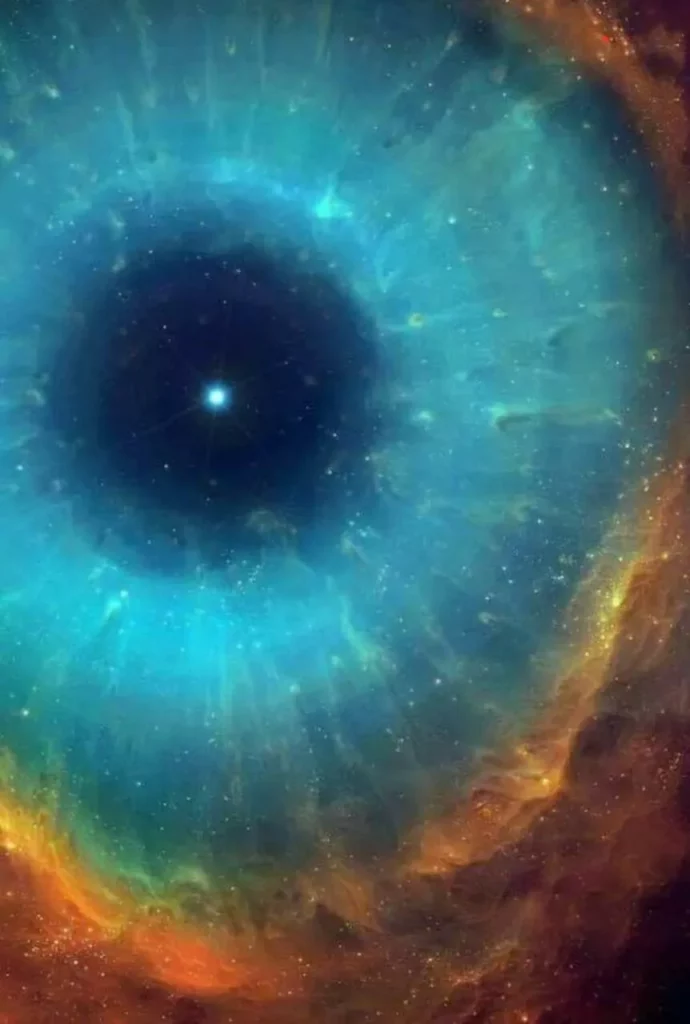
The Hubble Space Telescope, Spitzer Space Telescope, and European Southern Observatory’s Very Large Telescope have all played a role in capturing stunning images of the Helix Nebula, allowing us to observe its mesmerizing structure and dazzling colors.
The Formation of the Eye of God
The Eye of God is a planetary nebula, a type of astronomical object that forms when a dying star sheds its outer layers of gas and dust. As the star nears the end of its life, it begins to run out of nuclear fuel and can no longer maintain the outward pressure needed to counteract the force of gravity. This causes the star to swell into a red giant, eventually shedding its outer layers into space. The remaining core of the star, known as a white dwarf, emits ultraviolet radiation, which ionizes the surrounding gas and causes it to glow brightly.
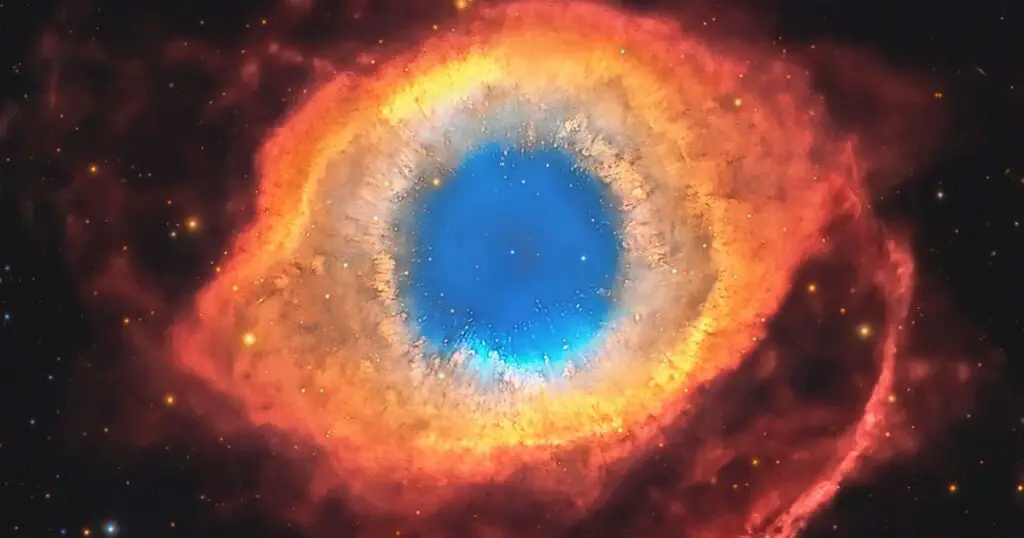
In the case of the Helix Nebula, the central white dwarf is estimated to be around 120,000 Kelvin (215,000 degrees Fahrenheit), making it one of the hottest white dwarfs known. The expelled gas and dust from the red giant forms an intricate pattern of glowing filaments, giving the Eye of God its unique and captivating appearance.
The Role of Dust and Gas in the Eye of God
The intricate structures and vibrant colors of the Helix Nebula are due in large part to the complex interplay of dust and gas. The ionized gas in the nebula absorbs and re-emits the ultraviolet radiation from the central white dwarf, creating a kaleidoscope of colors that span the visible light spectrum. The red and green hues are created by ionized hydrogen and oxygen, while the blue tones result from scattered light from the dust particles.
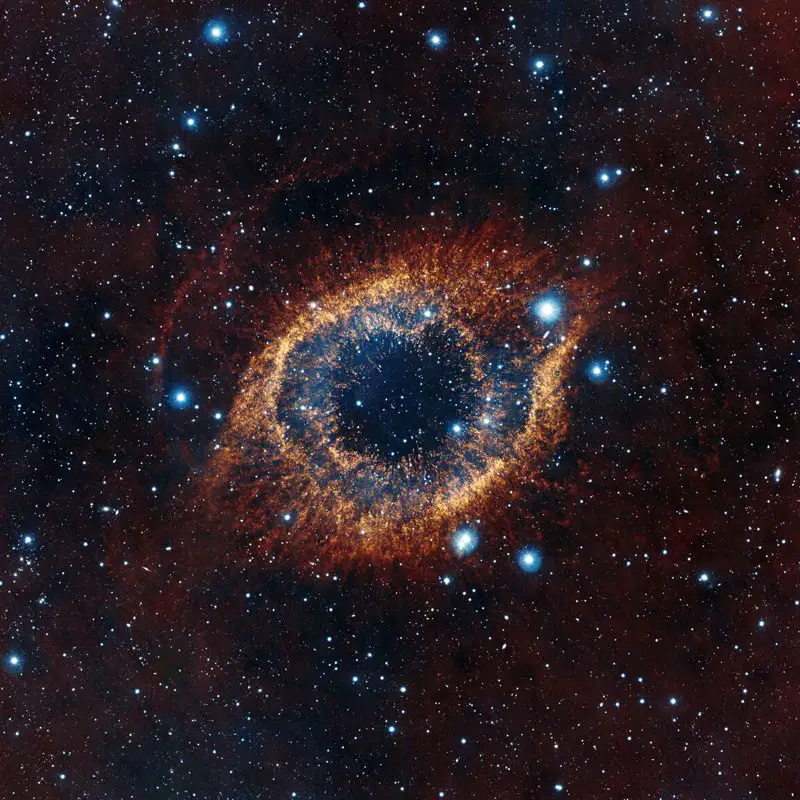
These dust particles also play an essential role in the formation of new stars. Over time, the dust and gas in a nebula can clump together under the influence of gravity, eventually forming new stars and planetary systems. In this sense, the Eye of God is not only a stunning testament to the death of a star but also a cosmic nursery for the birth of new celestial objects.
The Significance of the Eye of God in the Cosmic Tapestry
The Eye of God serves as a striking reminder of the cyclical nature of the universe, with the death of one star giving rise to the birth of others. It also provides valuable insights into the processes that govern stellar evolution, helping us to understand the life cycles of stars and the forces that shape the cosmos.
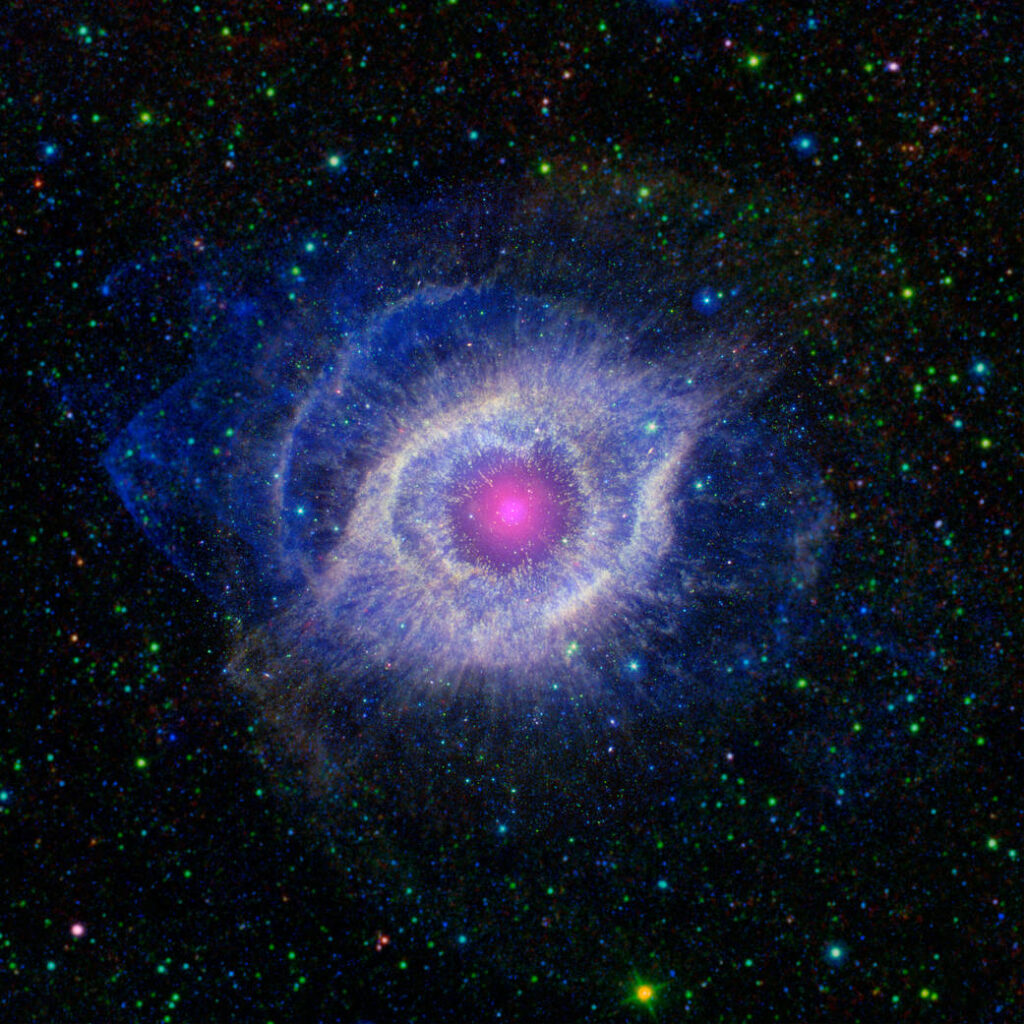
Furthermore, studying the Helix Nebula allows us to better comprehend the role of gas and dust in the formation of new stars and planetary systems.
The Eye of God and Our Place in the Cosmos
As we contemplate the majesty of the Eye of God, we are reminded of the words of Carl Sagan: “We are a way for the cosmos to know itself.” The study of celestial objects like the Helix Nebula allows us not only to explore the mysteries of the universe but also to reflect on our own existence and place within the grand cosmic tapestry. By observing the eye that seems to gaze back at us, we are reminded of our own fragile nature and our connection to the stars. The Eye of God serves as a humbling reminder that we are but a small part of a vast and wondrous universe, yet also an integral piece of its ongoing story.
As we continue to unravel the mysteries of the cosmos, let the Eye of God stand as a symbol of our unending curiosity and our quest for understanding, a testament to the beauty and wonder of the universe that surrounds us.
Reference(s):
